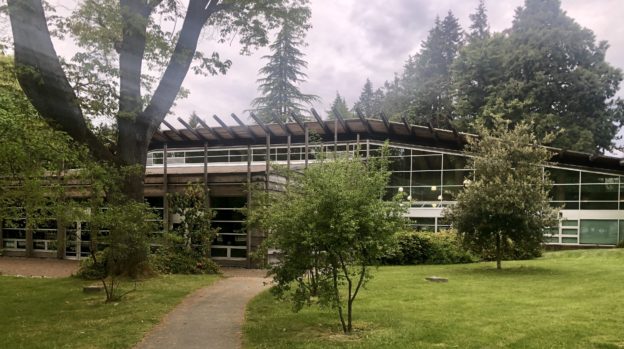What a delight it was to see people come together for HASTAC 2019! Gathering in the traditional, ancestral, and unceded territory of the Musqueam community to think collectively about decolonizing education and technology was revelatory to me, a white woman of settler origin with little background in Indigenous studies or practices. After a year (maybe more!) of planning phone calls, excitement about plenary speakers, and sneak previews of the gorgeous logo by Diamond Point, it was such an honor and privilege to watch the conference come to life.
Together with my colleagues at HASTAC, I would like to offer my thanks to the Musqueam Elders and community; to our hosts at the University of British Columbia, especially at the Longhouse and the Nest; to Tracey El Hajj and all the volunteers and staff who helped the conference run smoothly; to the extraordinary plenary speakers and performers; to everyone who shared stories and provocations and expertise; to the HASTAC Steering Committee for their leadership; and to Jentery Sayers, Dave Gaertner, and the organizing committee for making HASTAC 2019 happen. While no conference can ever go perfectly as planned, this one was built on such a strong foundation of community that even when there were snags, people jumped in to find solutions and move forward.

Futures Initiative Undergraduate Leadership Fellows, Graduate Fellows, and Postdoctoral Fellow in front of UBC’s rose garden during the HASTAC 2019 conference.
On a personal note, there were so many things that made this conference especially memorable and meaningful, many of which had to do with the inclusive and embodied nature of the conference. For instance, it was a delight to see kids and families at the conference, and I am so appreciative to the organizers for offering childcare that made it easier for families to attend. The beauty of the Musqueam territory was breathtaking, and brought many of the reflections on land and community to life in a vibrant and restorative way. I also found that connecting for meals and gathering for eight—EIGHT—plenaries during the three-day conference gave a rhythm and sense of shared experience.
The fact that the plenaries centered the voices of Indigenous women and non-binary people, that each speaker or performer was introduced by a member of the Musqueam community or other First Nations communities, and that they all had such different modes of presentation was a powerful demonstration of what an academic conference can look and sound like. I will be reflecting on each of the presentations for a long time. I learned from every session—from the consideration of assessment by Kim van der Woerd and Jennifer Reddy, who invited listeners to “create safe containers for risk” for students and scholars; to the powerful personal narrative of skilled orator Alana Sayers as she described her academic journey and the ways it sometimes came into tension with her commitments to her family and community; to the poetic words of Karyn Recollet as she bent time and space with rocks and bundles; to the evocative stories by Leanne Betasamosake Simpson of how “the land shows us the way” through squirrels, maple sap, and the curiosity of children.
To all who devoted resources of time, energy, thought, and money to attend; to all who shared their expertise, wisdom, questions, art, and provocations; to all who helped shape the framework and carry out the details that enabled participants to attend and be fully present: Thank you.
